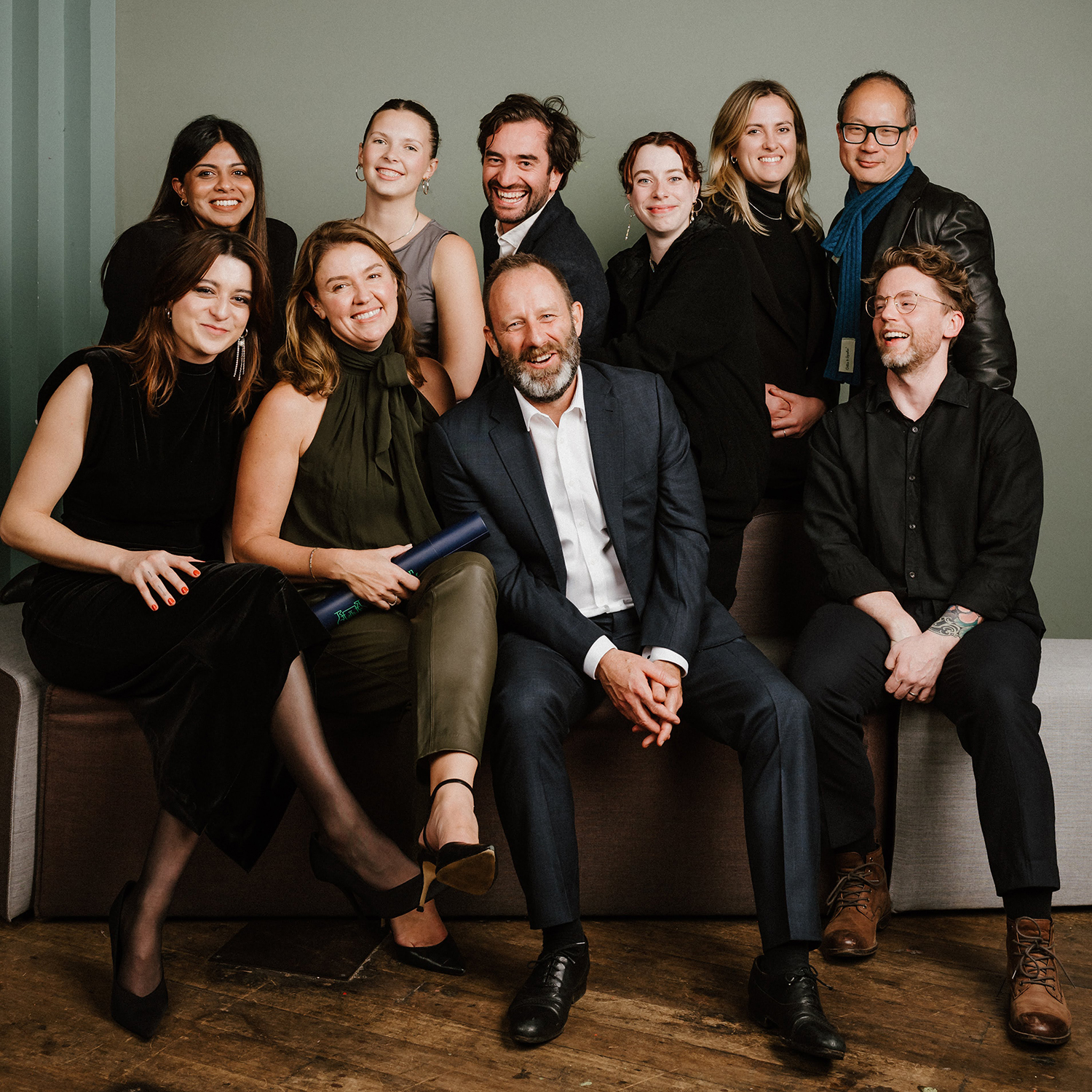When Stephanie Bullock and Julian Kosloff decided to set up their own practice in 2017, they knew from the outset that they wanted to be a B Corp. Stephanie takes us through their early plans, the benefits and challenges of B Corp certification, and the impact on clients and the business.

Values and benefits
B Corp certification provides external and highly rigorous validation of our approach to environmental and social responsibility that carries real weight, as well as allowing us to be part of a community of like-minded businesses committed to environmentally and socially responsible practice. All of our work is focused in the public sector, so it ensures a very clear alignment of our values and the way we operate with the idea of public contribution. Clients see it as validation of us as a values-based organisation that cares about impact, and it allows us to talk about value-alignment with them from the earliest stages of a project. This leads to better design outcomes in our experience.
Because we set the practice up in accordance with the B Corp framework we were aligned with B Corp standards from the start, and it was incredibly beneficial in terms of helping us to establish strong operational, cultural and design practices from the outset.
Motivation
When co-founder Julian Kosloff and I first decided to form the practice, we knew from the outset that we wanted to be a B Corp – it can be very difficult to do this when you are working with pre-established systems and structures. We knew there was an opportunity to set the practice up from the outset in line with B Corp principles, so that we could commence the certification process immediately. Both of us had always felt very strong alignment with a business model that considered the impact of the work that we do, that was based on an ethical framework, and provided a clear structure to achieve this.


The certification process
We commenced the certification process as soon as we started the practice in mid-2017, but you can’t officially register for certification until you have been in operation for nine months, so we made sure to set up all of our processes and structures in line with this and started the certification process in 2018.
It took another nine months for us to become fully certified in 2019 because the process is extremely rigorous with several external reviewers. We didn’t really have any expectations but were absolutely thrilled to receive our first certification. We have been through one round of re-certification in 2022, and we are due for re-certification in 2025.
B Corp impact
The B Corp framework is continually evolving so it effectively gets harder and harder to maintain your certification each time. We see this as a very positive thing as it aligns with a focus on continuous improvement. When we sought to become ISO certified in Quality, ESD and OH&S in 2022, we found that we already had many of the processes in place to facilitate this, and the B Corp framework is highly compatible with the ISO certification process.
It needs to be embedded in the day-to-day operation of the practice, as well as the overall strategic direction. If it’s not, re-certification is almost impossible. We see it as integral to what we do, rather than an add-on. Its alignment with other frameworks that we utilise, such as ISO certification, makes it less of a thing you have to balance, and more a fundamental part of the effectiveness of running the practice.
B Corp certification has definitely helped us win projects with the types of clients that are interested in social and environmental outcomes, which is really about value alignment. It also provides a framework for identifying aspirations in key impact areas such as environmentally sustainable design. Because clients know from the outset that this is an area that we pursue in all our projects, there is a shared commitment from the outset that this needs to be prioritised.

Employee ownership
We were very committed to providing pathways to ownership for everyone within the practice, which is an area that is recognised within the B Corp framework as having great value. Like other aspects of the framework, it isn’t compulsory to be compliant in any one area. You gain points for different elements, and an employee shareholding scheme is one aspect that is recognised under the framework. Since we instigated the scheme four years ago, we have had a 100% take-up rate, and 25% of the practice is now owned by non-founding directors. We measure ownership on an ongoing basis, including gender balance, to ensure we are meeting our own targets for diversity of ownership. The distribution of profit through dividends has also helped ensure we do not have a gender pay gap within the practice, another metric we monitor on an annual basis.
Advice for others
Whilst there are competitive advantages to being a B Corp, this really isn’t sufficient reason to pursue it – if commitment to the types of social and environmental aims it promotes aren’t fundamentally aligned with your values, it will be very difficult to certify, and to maintain certification. Most architectural practices would likely support these aims in reality, so the best advice is to just get started by doing the initial questionnaire, and then see the path towards certification as being about a broader re-focusing of your practice towards social and environmental benefit, that will provide other benefits in terms of strategic clarity and mission. Finally, don’t be afraid to ask for help – there is an existing community of B Corps that are very happy to chat to you to help you on your certification journey (including us!).

Kosloff Architecture was founded in 2017 by directors Stephanie Bullock and Julian Kosloff. Since then, the practice has grown to a team of 22, based in the studio in Flinders Lane, Melbourne, and undertaking projects throughout Victoria. Kosloff was founded in accordance with the principles of a B Corp – both directors credit the B Corp framework with supporting the rapid growth of the practice as well as our continuing focus on producing award-winning projects in the public sector, including a wide range of education, community and sports facilities.




















